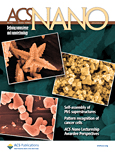
ACS Nano
Scope & Guideline
Advancing the Frontiers of Nanotechnology
Introduction
Aims and Scopes
- Nanomaterials and Nanostructures:
The journal covers a broad range of nanomaterials, including metals, semiconductors, and polymers, focusing on their unique properties and potential applications in various fields. - Nanomedicine:
Research related to the use of nanomaterials for medical applications, including drug delivery systems, imaging, and therapeutic agents, is a significant area of focus. - Energy Storage and Conversion:
The journal publishes studies on nanostructured materials for energy applications, such as batteries, supercapacitors, and fuel cells, highlighting advancements in performance and efficiency. - Environmental Nanotechnology:
Research addressing the environmental implications of nanomaterials, including their role in pollution remediation and sustainable practices, is also prominently featured. - Characterization Techniques:
Innovative methodologies for the characterization of nanomaterials at the atomic and molecular levels, including advanced microscopy and spectroscopy techniques, are a key aspect of the journal.
Trending and Emerging
- Smart Nanomaterials:
Research on smart and responsive nanomaterials, which can change their properties in response to environmental stimuli, is gaining prominence, highlighting their potential in various applications. - Biomimetic Approaches:
Studies integrating biomimetic designs and materials are trending, focusing on replicating natural systems for enhanced functionality in fields like drug delivery and tissue engineering. - Sustainable Nanotechnology:
There is an increasing emphasis on sustainable practices in nanotechnology, including the development of biodegradable nanomaterials and environmentally friendly synthesis methods. - Nanoplatforms for Immunotherapy:
The application of nanomaterials in cancer immunotherapy is rapidly expanding, with innovative designs aimed at enhancing immune responses and targeting tumor cells more effectively. - Machine Learning and AI Applications:
The incorporation of machine learning and artificial intelligence in the design and analysis of nanomaterials is emerging as a powerful trend, facilitating rapid advancements in material discovery and optimization.
Declining or Waning
- Traditional Materials Science:
Research centered on bulk material properties and applications has decreased in prominence as interest shifts towards more advanced nanomaterial applications. - Nanoelectronics:
Although still relevant, the volume of publications specifically focused on nanoelectronic devices has waned, possibly due to the saturation of certain topics and the emergence of new fields. - Nanotoxicology:
Investigations into the toxicological effects of nanomaterials have seen a reduction in focus, potentially due to a growing consensus on safety and regulatory frameworks. - Static Applications:
Research on static or non-responsive nanomaterials is declining as the field increasingly emphasizes dynamic and responsive systems that can adapt to environmental changes.
Similar Journals
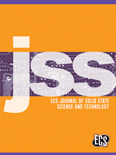
ECS Journal of Solid State Science and Technology
Bridging Theory and Application in Materials ScienceECS Journal of Solid State Science and Technology, published by the Electrochemical Society, is a prominent journal dedicated to the advancement of research in the field of electronic, optical, and magnetic materials. With an ISSN of 2162-8769 and an E-ISSN of 2162-8777, this journal has established a significant presence since its inception in 2012, spanning critical developments in solid-state science that are essential for innovative technologies. Operating within the United States and recognized for its global outreach, it holds a respectable Q3 category ranking in the materials science category as of 2023, reflecting its commitment to high-quality research and its role in bridging theoretical and applied aspects of materials science. Researchers, professionals, and students alike will find vital information and cutting-edge studies that further the understanding and applications of solid-state technologies. The journal is accessible to an extensive audience, making it an invaluable resource for those engaged in the ever-evolving landscape of materials science.
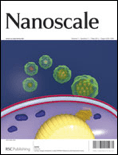
Nanoscale
Unveiling the Potential of Nanotechnology.Nanoscale is a premier academic journal published by the Royal Society of Chemistry, dedicated to advancing the field of nanoscience and nanotechnology. With both its ISSN (2040-3364) and E-ISSN (2040-3372) ensuring wide accessibility, the journal is renowned for its high-impact research contributions, reflected in its impressive 2023 Impact Factor and prestigious Q1 ranking in both Materials Science (Miscellaneous) and Nanoscience and Nanotechnology categories. Since its inception in 2009, Nanoscale has fostered a collaborative platform where leading researchers from around the globe share their innovative findings across a multitude of topics spanning from material synthesis to applications in nanotechnology. The journal not only serves as a valuable resource for professionals, researchers, and students but also actively engages the academic community in discussing emerging trends, thus shaping the future of nanoscience. Situated in the heart of the UK at Thomas Graham House, Science Park, Milton Rd, Cambridge CB4 0WF, Nanoscale remains a key publication for those looking to keep abreast of the latest breakthroughs in an ever-evolving field.

JOURNAL OF CLUSTER SCIENCE
Fostering Excellence in Cluster Science ResearchJOURNAL OF CLUSTER SCIENCE, published by SPRINGER/PLENUM PUBLISHERS, is a prominent and influential journal in the fields of Biochemistry, Chemistry, Condensed Matter Physics, and Materials Science. With an ISSN of 1040-7278 and E-ISSN of 1572-8862, this journal has been contributing to scientific discourse since its inception in 1990 and continues to publish cutting-edge research through 2024. It holds a respectable position in the academic landscape with its category quartiles indicating a Q3 ranking in Biochemistry and Q2 rankings in Chemistry, Condensed Matter Physics, and Materials Science as of 2023. The journal's noteworthy Scopus rankings further underscore its relevance, particularly a rank of #82 in Condensed Matter Physics, showcasing its impact and the quality of research disseminated. Although it does not currently offer open access options, it remains a key resource for researchers, professionals, and students who are invested in understanding the complexities of cluster science and its interdisciplinary applications.
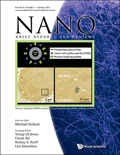
NANO
Shaping the Future of Nanoscience and TechnologyNANO is an esteemed academic journal published by World Scientific Publishing Co. Pte Ltd, focusing on the frontier of nanoscience and nanotechnology. With ISSN 1793-2920 and E-ISSN 1793-7094, this journal has been a pivotal platform for disseminating innovative research from 2008 to 2024. Located in Singapore, NANO has established itself within the academic community, currently holding notable rankings in the Q3 Category for both Condensed Matter Physics and Materials Science, as well as a Q4 Category status in Nanoscience and Nanotechnology. Though it operates under a non-open access model, its contributions are invaluable for researchers, professionals, and students seeking to stay abreast of the latest advancements and interdisciplinary approaches within the nanoscale domain. By providing in-depth articles, reviews, and insights, NANO plays a significant role in advancing our understanding of materials at the nanoscale, thereby fostering innovation and collaboration across related fields.

AIP Advances
Empowering Researchers, Enriching Knowledge.AIP Advances, published by AIP Publishing in the United States, is an esteemed open-access journal that has been pivotal in disseminating knowledge in the fields of Nanoscience and Nanotechnology and Physics and Astronomy since its inception in 2011. With an unwavering commitment to enhancing global scientific communication, the journal provides a platform for groundbreaking research and innovative methodologies, catering to a diverse audience of researchers, practitioners, and students. As of 2023, AIP Advances enjoys a respectable impact factor that reflects its significance in the academic community, ranking in the Q3 category for both Nanoscience and Nanotechnology and Physics and Astronomy. The journal has made its contributions accessible, reinforcing its mission of promoting collaboration and knowledge sharing across disciplines. Researchers interested in publishing their work will find AIP Advances not only a valuable medium for their findings but also a hub for the latest advancements and discussions shaping these dynamic fields.
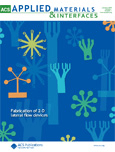
ACS Applied Materials & Interfaces
Pioneering Innovations in Nanotechnology and MedicineACS Applied Materials & Interfaces, published by the American Chemical Society, stands as a leading journal in the field of applied materials, nanotechnology, and interdisciplinary research in medicine. With an impressive Impact Factor that places it in the Q1 category across Materials Science, Medicine, and Nanoscience and Nanotechnology, this journal consistently ranks among the top tier, evidencing its significance and influence in advancing scientific knowledge. The journal’s scopus ranking of 33 out of 463 in General Materials Science further underscores its critical role in disseminating innovative and high-quality research. Although it is not an open-access journal, a diverse range of access options is available, ensuring that vital research findings are accessible to a broad audience of researchers, professionals, and students. Targeting breakthroughs in the synthesis, characterization, and application of materials and interfaces, ACS Applied Materials & Interfaces serves as a pivotal platform for publishing cutting-edge studies essential for future technological advancements.
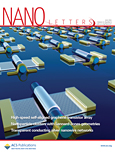
NANO LETTERS
Connecting researchers with cutting-edge nanoscience insights.NANO LETTERS is a leading journal, published by the American Chemical Society, that focuses on the rapidly evolving field of nanoscience and nanotechnology. With an impressive impact factor and consistently ranked in the Q1 category across multiple disciplines including Bioengineering, Materials Science, and Condensed Matter Physics, it serves as an essential resource for researchers and professionals aiming to stay at the forefront of nano-related advancements. This journal, available in print and online (ISSN: 1530-6984, E-ISSN: 1530-6992), features cutting-edge research articles that explore the intricate interplay between nanoscale materials and emerging technologies, driving innovation across various sectors. As of 2023, NANO LETTERS holds prestigious rankings, including a top position in several Scopus categories, underscoring its impact within the scientific community. Published continuously since 2001, NANO LETTERS is dedicated to disseminating high-quality research papers that inspire and inform the next generation of scientists and engineers.

Journal of Ovonic Research
Pioneering Research in Magnetic and Optical Materials.Journal of Ovonic Research is a distinguished publication dedicated to advancing the fields of electronic, optical, and magnetic materials. Published by VIRTUAL CO PHYSICS SRL, this journal offers a platform for researchers to share innovative findings and developments that push the boundaries of technology and materials science. With an ISSN of 1842-2403 and an E-ISSN of 1584-9953, it provides an important service to the academic community, particularly within Romania and beyond. Despite its recent inception in 2011, the journal has gained traction in the academic landscape, reflecting a Q4 quartile ranking in crucial categories such as Electronic, Optical and Magnetic Materials, as well as in Physics and Astronomy. The Scopus rankings further underscore its positioning, ranking within the 25th to 37th percentile across various disciplines, making it a valuable resource for professionals and students alike. Although the journal currently operates on a non-open access basis, it remains committed to exploring the latest advancements in materials science, encouraging interdisciplinary collaboration and fostering a deeper understanding of surface, coating, and film technologies. As the field evolves, Journal of Ovonic Research stands as a beacon for scholarly communication, bridging the gap between research and practical application.

Energy & Environmental Materials
Transforming Research into Real-World ImpactEnergy & Environmental Materials, published by WILEY, is an esteemed academic journal dedicated to pioneering research in the multifaceted domains of energy, environmental science, and materials science. Since its inception in 2018, this journal has rapidly established itself as a leading platform, holding a prestigious Q1 ranking across multiple categories including Renewable Energy, Sustainability, and Waste Management, reflecting its significant contributions to advancing knowledge in these critical areas. With a robust Scopus ranking that positions it in the top percentile for Environmental Science and Materials Science, it caters to a diverse audience of researchers, professionals, and students seeking cutting-edge findings and practical applications in energy efficiency and sustainable materials. This open-access journal facilitates the dissemination of innovative research and aims to bridge the gap between scientific exploration and real-world solutions for a sustainable future. The editorial team encourages submissions that explore both theoretical and practical aspects, ensuring that every publication not only contributes to the academic landscape but also drives impactful change in energy and environmental practices.

Nanomaterials
Transforming Ideas into Nanoscale RealitiesNanomaterials, published by MDPI in Switzerland, stands as a leading platform in the realm of materials science and chemical engineering. Since its inception in 2011, this Open Access journal has garnered significant attention, reflected in its impressive rankings—placing in the Q1 category for Chemical Engineering and Q2 for Materials Science as per the 2023 quartiles. The journal consistently fosters innovation and interdisciplinary research through its rigorous peer-reviewed articles, inviting submissions that span a wide range of topics from nanostructured materials to advanced engineering techniques. With a commendable Scopus rank—#44 in Chemical Engineering and #93 in Materials Science, both within the top percentiles—Nanomaterials serves as an essential resource for researchers, professionals, and students eager to stay abreast of developments in this rapidly evolving field. Since its establishment, it has distinctively contributed to the academic community by facilitating insightful knowledge exchange and promoting high-quality research around nanoscale materials.